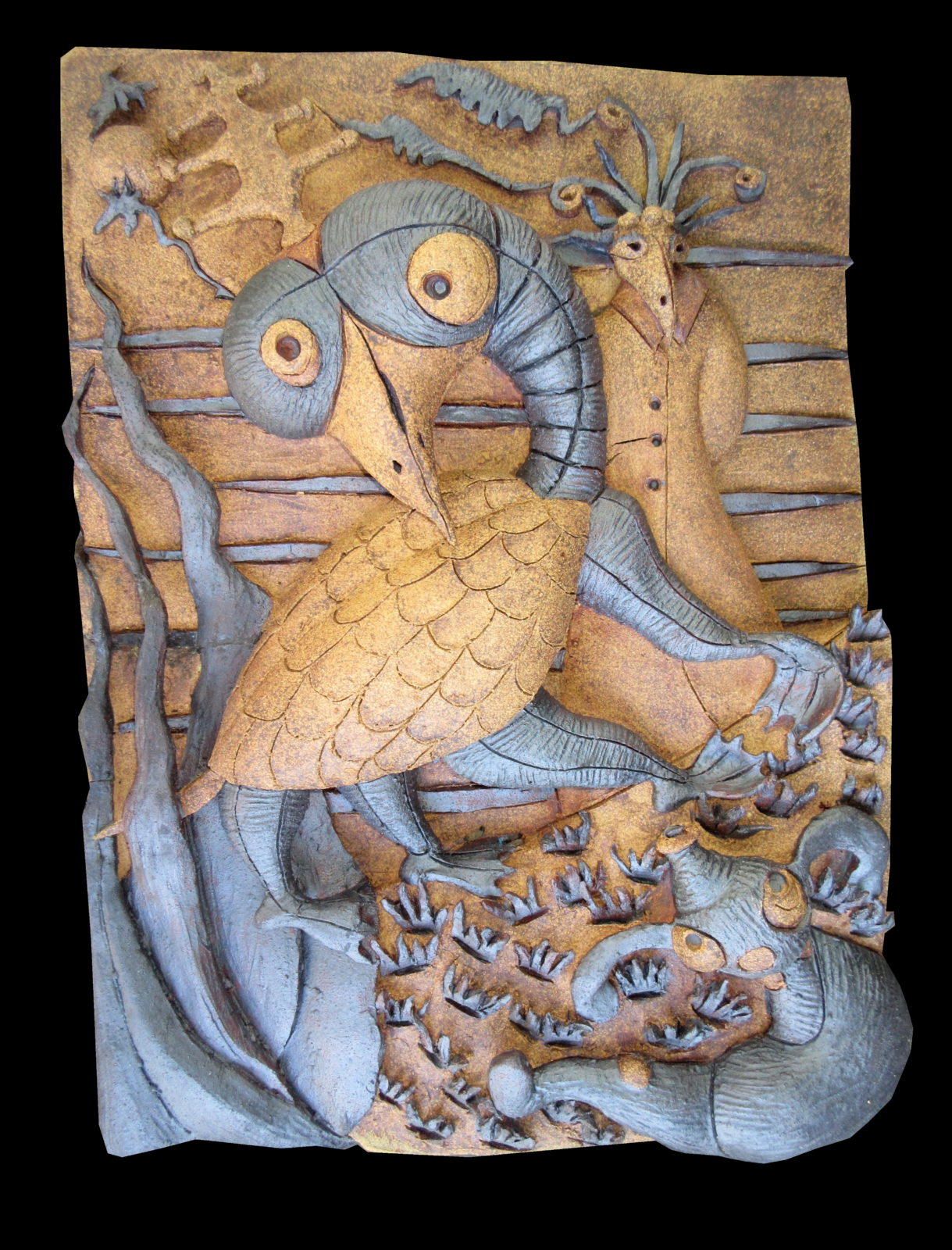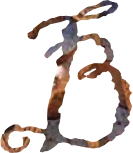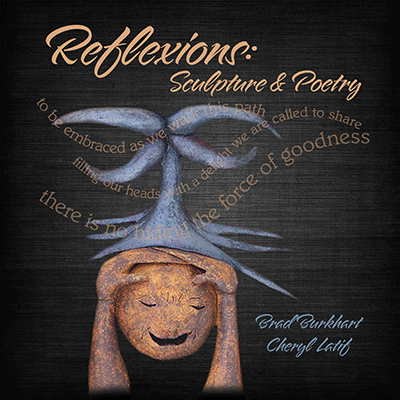This month I have chosen to consider a sculpture featuring what appears to be a shocked turtle as the central character with a prescient insect shaman in the background.

The Burden of Consciousness
Having originated some 230 million years ago, turtles are some of the oldest reptiles in existence, while insects have survived for over 325 million years. Both groups diversified into many species, successfully adapting to their environments and other life forms over the ages and continuing to thrive today.
Because of their long history, in many cultures, turtles represent the wisdom of adaptation and the perseverance to survive over long periods of evolutionary change. They appear as guardians of the environment and ultimate protectors of the world. Many believe that turtles have a deep-rooted connection that goes back to the creation of life itself.
Some Indigenous Americans call their land Turtle Island, believing that the land they live on was originally created by placing soil on the back of a turtle that swims the world’s oceans.
In contrast, Homo sapiens has only been around for 300,000 years. But humans evolved consciousness and the ability to problem solve. This consciousness has allowed us to dominate the natural world in a very short period of time, evolutionarily. But mostly, until recently, we have only been interested in benefiting ourselves.
The turtle & insect shaman sit in shock at our reckless disregard for the slow and careful evolutionary processes they symbolize.
To me, this piece speaks of our responsibility to use The Burden of Consciousness in non-egotistical ways, with awareness of our reliance on the web of life, and how our actions and creations impact it. Despite the fact that we often use our unique abilities to enhance our own survival and consume beyond our needs, this sculpture can inspire us to shoulder the burden of consciousness with the patience of a turtle, focused on the long view. Otherwise, the slow and deliberate path of turtles & insects will soon eclipse us.



